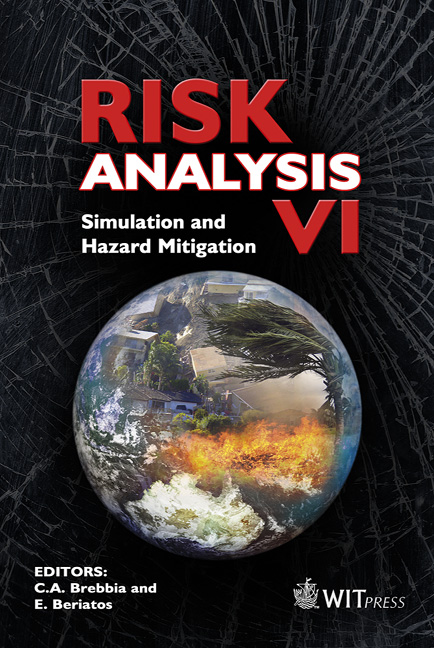Slope Stability Modelling Of A Sandstone Cliff South Of Livorno (Tuscany, Italy)
Price
Free (open access)
Volume
39
Pages
13
Page Range
321 - 333
Published
2008
Size
2472 kb
Paper DOI
10.2495/RISK080321
Copyright
WIT Press
Author(s)
D. Marchetti, G. D’Amato Avanzi, N. Sciarra & M. Calista
Abstract
The landscape of the coast south of the town of Livorno (Tuscany, Italy) is characterized by sandstone headlands and sandy pocket beaches. Lithological features and physical-chemical processes favour many slope failures (mainly rock slides and rock falls) involving the sandstone cliffs and extending all over the cliff height; these failures often threaten people and facilities. The most prominent positive relief landform is structurally controlled by three main, closely spaced orthogonal joint sets. The presence of leaning and collapsed rock blocks suggests that continuous sea erosion and mass wasting maintain the cliff slopes steepness and risk conditions. The sandstone mechanical properties and fracture pattern have been investigated in order to determine the response of the rock mass to subaerial and marine stress. Hardness and weathering of the rocks were assessed using a Schmidt hammer and the Point Load Test, and statistical analysis was undertaken to remove outlying values. The sandstone outcrops were characterized according to the Bieniawski’s RMR and Romana’s Slope Mass Rating. Such data have been reported in a GIS system in order to determine the landslide susceptibility of the cliff. A series of stability analyses, with a Distinct Element Method (DEM) model, were carried out to evaluate stress and displacement distribution near the free surface of a vertical slope face, as a function of steepness, dip direction and rock mass quality. The results showed that assessing block geometry could provide an effective tool in predicting the rock-mass stability, determining the mechanism by which blocks fail from a vertical slope, and the consequent repetitive slope failures through time. Keywords: rock mass, rock fall, RMR, SMR, Distinct Element Method.
Keywords
rock mass, rock fall, RMR, SMR, Distinct Element Method.





